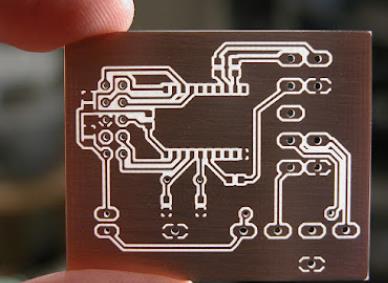In addition to ensuring a reliable working circuit, the main purpose of the electromagnetic compatibility design of the PCB board is to reduce the electromagnetic radiation of the circuit board and ensure that the equipment meets the relevant standards. Since the electromagnetic radiation efficiency of a circuit is high, its receiving efficiency is also high. Therefore, the electromagnetic radiation of the circuit board is suppressed in the design, and the anti-interference ability of the circuit board is correspondingly improved. The radiation from the circuit board is mainly generated from the PCB board traces and "I/O" cables. The common-mode and differential-mode currents were introduced earlier. From the modes of these two currents, radiation can be divided into two types: differential-mode radiation and common-mode radiation. Differential Mode Radiation: Electromagnetic radiation is generated when the circuit operating current flows in the signal loop. The current flowing is differential mode, so the radiation generated is called differential mode radiation; common mode radiation: when the potential of the conductor that transmits the signal is different from the potential of the adjacent conductor, current will be generated between each other. Even without any conductor connections, high frequency currents flow through parasitic capacitances. This current is called common mode current and the radiation it produces is called common mode radiation. The radiation of the cable is mainly based on the common mode radiation. Using the current loop model to analyze the differential mode radiation, the radiated electromagnetic fields in the near-field and far-field regions can be obtained respectively. In the same way, the common mode radiation is analyzed, and the radiated electromagnetic fields in the near-field region and the far-field region are obtained respectively.

The radiation introduced above does not fully correspond to the actual application circuit situation, because the derivation of the formula assumes that in the single-wire model, the circuit impedance is infinite in the near field, and in the current loop model, the circuit is short-circuited. In a real circuit, the circuit is not an ideal loop, nor is it a completely open wire. Therefore, the radiation estimation using the ideal model will have a large error in the near field. In order to correct the errors caused by the actual and ideal models, the correction wire calculation models for the near field and the far field are given below. In addition, in electromagnetic compatibility standards, the strength of the radiation is usually characterized by the strength of the electric field. In practice, as long as the electric field strength is limited, the circuit can meet the electromagnetic compatibility standard. Here, the commonly used formula is the differential mode radiation prediction formula, which is used to predict whether the differential mode radiation of the circuit will cause the radiation to exceed the electromagnetic compatibility standard. E=2.6IAf2/D(μV/m), according to the formula, it can be directly concluded that reducing the differential mode radiation is to control the differential mode current I, frequency f or loop area A. Using a low-power chip, the differential mode current I can be reduced by using a buffer; using a low-speed chip, reducing the frequency of the circuit can reduce f. But both methods have certain limitations in practice. The remaining and realistic means is to control the loop area of the signal. This requires designers to use large-scale integrated circuits as much as possible when selecting chips, using chips manufactured by surface mounting technology, without using mounting seats, etc.; on the other hand, when wiring the circuit board, try to control the area of the signal loop. The commonly used common mode radiation prediction formula is E=1.26ILf/D. Similarly, as long as the three parameters of the above formula are controlled, the standard of reducing common mode radiation can be achieved. Common mode choke coils can be used to increase the impedance of the common mode current flow path when the common mode voltage is constant; or the cable can be shortened as much as possible under the premise of meeting the requirements of use on PCB board.